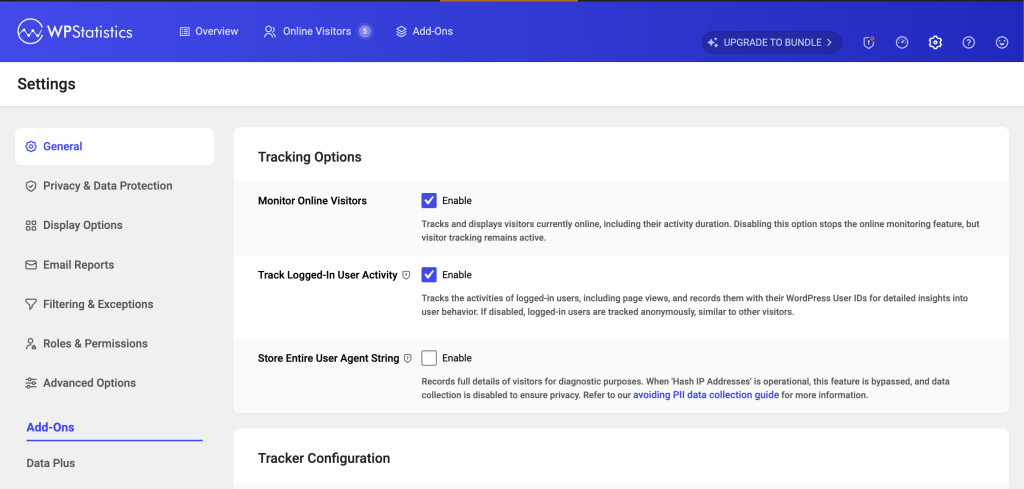Take your business to next level
Become part of our growing family of +600,000 users and get the tools you need to make smart choices for your website. Simple, powerful insights are just a click away.
WP Statistics offers a wide range of customizable settings that allow you to tailor the plugin’s functionality to your specific needs. By adjusting these settings, you can enhance the performance of your website, ensuring that WP Statistics operates efficiently and effectively in line with your usage patterns.
Before diving into the specifics, ensure you’re familiar with accessing the WP Statistics settings within your WordPress dashboard. Navigate to WP Statistics from your dashboard menu to find the settings page where you can customize various aspects of the plugin.
WP Statistics is designed to be flexible, allowing you to control how data is collected, viewed, and managed. Below, you’ll find two main groups of settings – General Settings and Optimization Settings. Each group is crucial for WP Statistics to your requirements and improving your site’s performance.

General Settings encompass the core aspects of WP Statistics, including visitor tracking, data collection methods, and privacy settings. Here, you can configure the plugin to align with your site’s goals and compliance requirements.
Optimization Settings are crucial for enhancing the performance of WP Statistics and, by extension, your website. These settings allow you to manage how data is stored, reduce resource consumption, and ensure the plugin runs smoothly without impacting site speed.
Customizing WP Statistics through these settings allows you to maintain a balance between comprehensive analytics and optimal website performance. We encourage you to explore these settings to find the perfect configuration for your site.
For further assistance or inquiries, please consult our FAQ or see our Support page. Our goal is to ensure you have all the tools and knowledge needed to make the most out of WP Statistics.
Become part of our growing family of +600,000 users and get the tools you need to make smart choices for your website. Simple, powerful insights are just a click away.